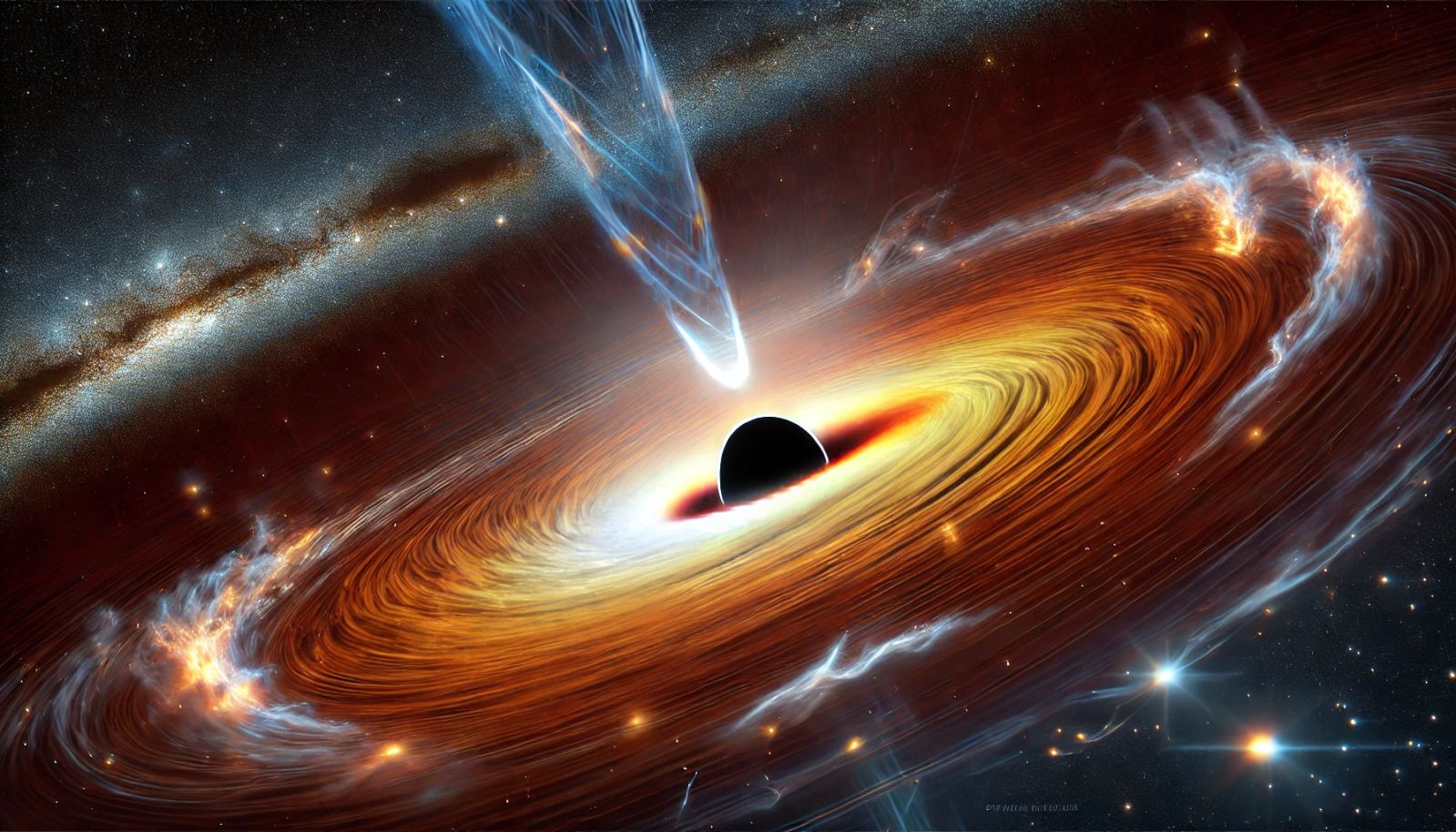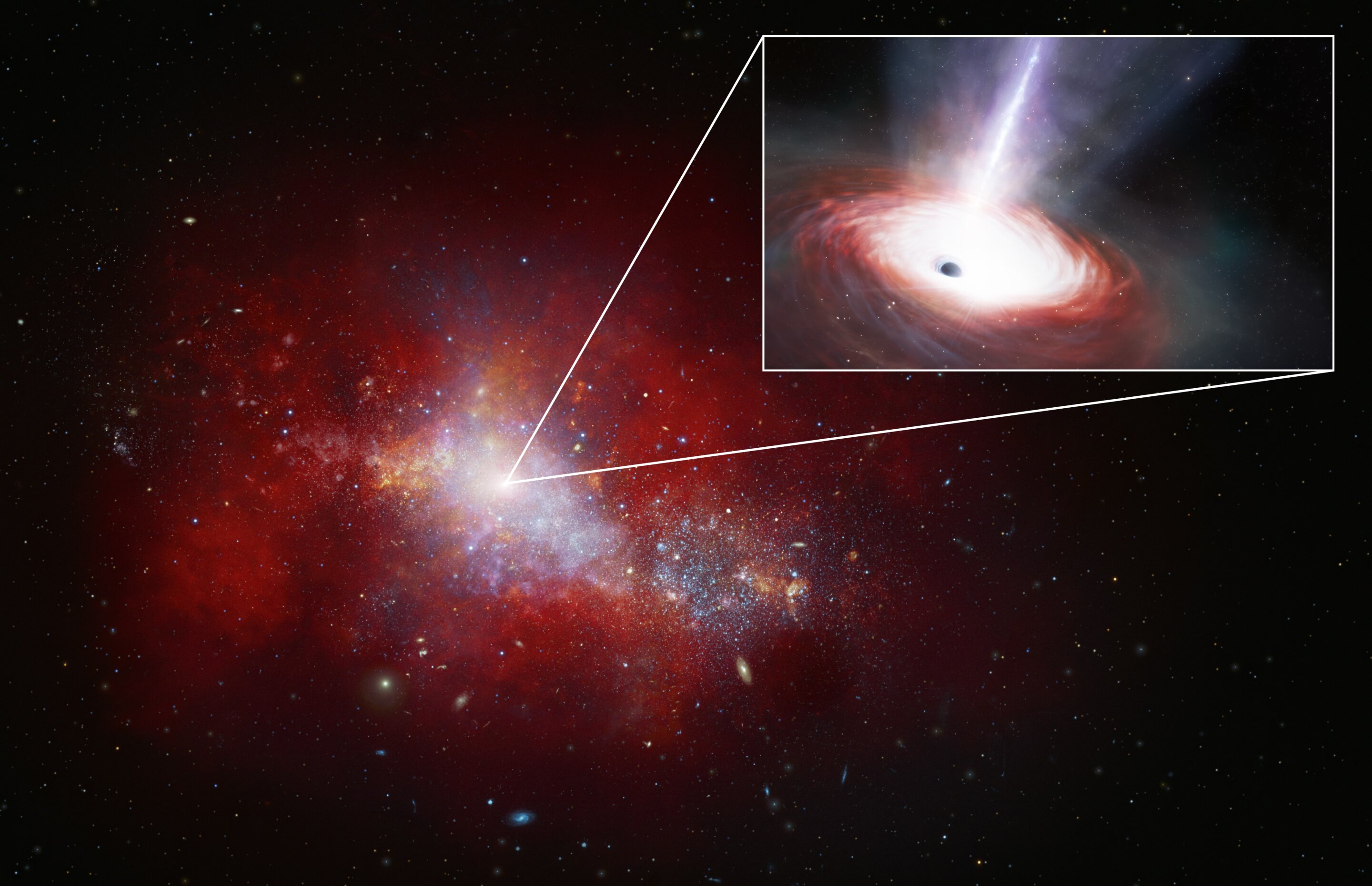This black hole is gorging on matter at 40 times the theoretical limit ⚫️
Follow us on Google News (click on ☆)

A tiny black hole located in a red dwarf galaxy, which appeared only 1.5 billion years after the Big Bang, has caught researchers' attention for its insatiable appetite. This black hole, named LID-568, is consuming matter at a rate 40 times greater than the theoretical limit, known as the Eddington limit, raising questions about the processes governing black hole evolution in the young Universe.
The discovery was made possible thanks to data collected by the James Webb Space Telescope (JWST) and the Chandra X-ray Observatory. Hyewon Suh, an astronomer at NSF's NOIRLab, and her team detected this black hole among a population of galaxies that are extremely bright in X-rays but invisible in the optical and near-infrared spectrum. With JWST's infrared capabilities, these galaxies could be studied from an unprecedented perspective.
LID-568 stood out due to its intense X-ray emissions, a characteristic pointing to extreme activity at the galaxy's core. Given its low brightness in other spectra, the researchers had to use JWST's integral field spectrograph to observe each pixel of the visual field, an innovative approach that enabled reliable detection.
Using this method, researchers made an additional discovery: powerful gas outflows emerging from LID-568's center. These rapid and massive gas ejections suggest that much of this black hole's growth may have occurred during a single phase of intense accretion.
LID-568's ability to accrete beyond the Eddington limit represents an extreme yet enlightening case. Theoretically, this limit sets a threshold where the radiation pressure balances the black hole's gravity, thus preventing infinite accretion. However, LID-568 exceeds this limit, illustrating that a "super-accretion" mechanism may exist in the Universe.

Dwarf galaxy hosting a hyper-growing black hole in the early Universe, observed by JWST and Chandra.
Credit: NOIRLab/NSF/AURA/J. da Silva/M. Zamani
Researchers speculate that these powerful gas flows might act as a "pressure valve," releasing excess energy generated by this extreme accretion, allowing the black hole to remain stable despite this unusual absorption rate.
These findings provide new insights into the formation of supermassive black holes, which are thought to have emerged from smaller "seeds" originating from the first stars or the direct collapse of gas clouds. The existence of such rapid accretion challenges certain models and raises questions about the evolution of the first black holes in the Universe.
Further observations with JWST are planned to delve deeper into the growth mechanisms of black holes in the early Universe, and potentially gain a better understanding of how these massive objects formed so early in cosmic history.